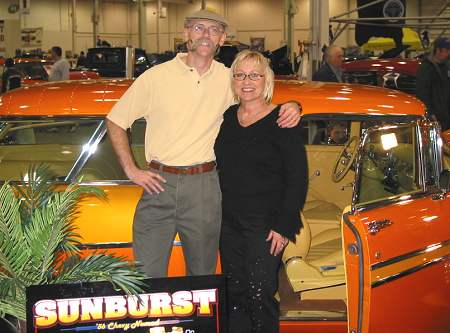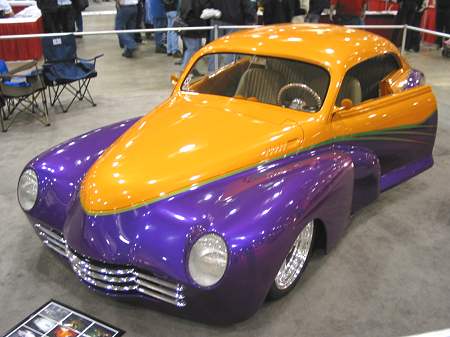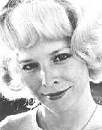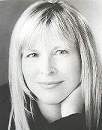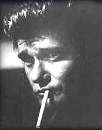
by bgbdlinc / intro by Frank Colgoni
|
If
you've cruised the Canadian Rodder forum, you've undoubtedly come
across the musings of "bgbdlinc" -a mysterious individual
that only a few of us have actually seen. Regarding his nickname
(assuming you've deciphered it as big-bad-Lincoln), it's about
his project car as he's not all that big although he is bad at
times.
'linc was fortunate to have spoken to some "show biz" personalities prior to the Performance World Custom Car & Truck Show, in Toronto on March 5/6/7, 2004. Specifically, 'linc talked to: Dennis Gage of the TV show ‘My Classic Car’, famous customizer Darryl Starbird, customizer Pat Keating, whose ’48 Chev was recently featured in Street Rodder Magazine, and from the movie ‘American Graffiti’, Hollywood actors Candy Clark (‘Debbie’) and Bo Hopkins (‘Joe’). Dennis Gage – ‘My Classic Car’ Dennis Gage is the TV host of ‘My Classic Car’ and a huge automotive enthusiast. The show is in its eighth season and is one of the highest rated motorsports programs on the SpeedTV network.
DG: “I have a PhD in chemistry, believe it or not, and even when my career was involved in the food industry, I still had a wild interest in the automobile, especially muscle cars and classic/antiques. During my time at Bristol-Myers Squibb, I met Brad Kimmel, founder of Bradley David Productions, Inc and creator of ‘My Classic Car’. While I had no formal training in television, I had a good knowledge of classic cars, an outgoing personality, and a memorable moustache and I just kind of came across a dream job.”
DG: “Me act? I couldn’t act to save my life. As host, I am just being myself and responding to the wonderful cars, shows, and personalities that comprise the segments of the show. You know, lots of people ask if I have a favourite car. And my answer is yes, – anything that has four wheels and an internal combustion engine -and it’s all true. I find something of interest in every car and truck that I come across.”
DG: “For the past eight years, believe it or not, we have produced only thirteen episodes per season, which is about half the amount for a regular series. However, our fans don’t seem to mind the odd repeat program and they find new stuff in them on the second viewing. Be that what it may, we are currently negotiating to produce twenty-six shows for the upcoming season.”
The
Performance World Custom Car & Truck Show (March 5-7, 2004)
is featuring two beautifully crafted cars by one of the best customizers
on the planet - Darryl Starbird. In anticipation of the show,
I talked to Darryl recently about these two outstanding examples
of the customizers art –cars that are not normally customized
- a ’41 Lincoln, and a ’72 Pantera. Darryl Starbird has been a world famous customizer for many years. His sleek, modernistic approach to customizing cars has been recognized everywhere from huge car show awards, to famous model cars that are highly prized collectables. In fact, he himself has produced three custom car shows every year for 47 years! He also created the Darryl Starbird’s National Rod & Custom Car Hall of Fame, northeast of Tulsa, Oklahoma, which houses many famous custom cars and trucks –not only created by him –but also from many other famous customizers. The Charter Members of the Hall of Fame reads like a who’s who of the industry –George Barris, Neil Emory, Gene Winfield, Joe Bailon, Ed Roth, the Alexander Bros. and many others. The list of inductees reads the same –Joe Wilhelm, Dick Dean, Bill Hines, Troy Trepanier, Sam Foose and again, many others.
BGBDLINC: “The ‘41 Lincoln -Continental Cabriolet is a rare car to begin with (I believe there were only 1250 produced due to the buildup to WWII), did you like the design?” DS: “I always liked the style of the ‘41 Lincoln Continental but all the ones that I ever saw were fully restored and beyond my price range. I found this car at a swap meet in Lancaster, Ohio, and it was in running condition. It was a very solid, un-restored car, so I bought it.”
DS: “It was a bone stock car with the original engine. It was a rough riding car, due to the transverse springs front and back…the chassis was a basic design under a luxury car… there wasn’t anything like a luxury feel to the suspension as you rode along the road.”
DS: “Just about everything was different. The wheelbase of the 2000 Lincoln was about 6” shorter than the ’41, so I removed 6” from the body length between the door and the rear fender. The chassis was also wider than the original car, so I widened the entire car by splitting it down the middle and adding a 6” section. The distance from the front wheel to the cowl was different so I lengthened the hood and cowl areas. The doors have hidden hinges and rounded corners.”
DS: “The lengthened hood was pie-cut to give it a lower profile and the nose was re-contoured. The rear fenders were widened, the rear deck widened, and both were molded to flow together. The removable steel top begins at the windshield that came from a Dodge truck and fit the design perfectly. The top is approximately 2” lower than the original which had tons of headroom. The back glass is a recent Chrysler. The car is a two seater and when you remove the top, you will notice headrest fairings like the Thunderbirds had. I’ve always liked them.”
DS: “I started with the originals but they have been so modified that I hesitate to use the term. They have been lowered, mounted closer to the body, and formed to follow the fender/grille contour if you look at it from above.” Also, did you run into any clearance problems with wheels of that size?” DS: “They are 22”, however, the overall diameter of the original rim and tire is not that different from these new ones….it’s just that where the original had a standard 16” wheel and tall sidewall tires, these have a 22” wheel with a very thin tire….the overall difference is minimal. However, the current tires are also 10” wide, so the builder has to be aware of the ‘sweep’ of the tires during the steering motion side to side or ‘lock-to-lock’, as the fenders are mounted on the body.”
BGBDLINC: “I understand that there is a great story behind this car, can you tell us about it?” DS: “Yes, I bought this car in 1972 and customized it in 1974. It went on the show circuit, and was eventually sold to a collector in Cleveland, Ohio. My wife found the car, and bought it back as a 50th wedding anniversary present for me. It still has the original paint that I applied to it and it has only an additional 800 miles on it…..after thirty years.”
DS: “I saw something in that car that I wanted to change –not just change for the sake of change, mind you –but I wanted to improve on the basic elements of the design.” BGBDLINC: “From what I can see, the front fenders are extended forward and downward and the rear fenders are extended back and up to overcome what I would call the rather truncated design of the original car. The original car, beautiful as it is, still looks cut off and stubby, to me.” DS: “What I had in my mind was the idea to extend the original design to enhance the theme and push the envelope with the car’s design attributes. All the top customizers often say that customizing should enhance the design and not change it entirely. Change for change sake has no appeal for me. I also filled in the back window to make it a true fastback. This required that I make a mirror arrangement recessed into the roof in order to see out the back of the car. It works well.”
BGBDLINC: “You are bringing one of the feature customized cars to the Performance World Show, a ’48 Chevrolet Coupe radical piece named ‘Down Pat’…where did you find the original vehicle?” PK: “I bought the original car several years ago from a friend. He was building a resto-rod ’48 Chevy and bought this car for the hood only, because it was in mint condition. So I bought it and stored it at the back of my shop for the past 10 years. I had another one years ago and I just love the shape and the design of the ’48 Chev.”
PK: “Yes, I started by actually shortening the body about 7”. Then I lengthened the cowl area, built new rockers, hood, and front fender extensions for the Mercedes headlights. The rear deck was shortened 13”, the top was chopped 51/2”, the body was sectioned 6” and channeled 6” over the Malibu frame while keeping the Malibu floors.”
PK: “The flat windshield glass is a much more practical application. If it breaks you can easily replace it. With a cut down piece of curved glass –you have a big problem finding a replacement and cutting it all over again.”
PK: “I laid back the windshield post 8” to give it a nicer profile.”
PK: “Yes, about 40% of the interior is hand fabricated metal. The interior door panels are metal, along with the dashboard and console. The interior took almost as much time to build as the rest of the exterior of the car.”
PK: “Funny you should mention that because the first time that this car was displayed in a show, it was in bare metal. Sometimes it seems to be a shame to cover up all the metalwork with paint but so be it.” BGBDLINC: “What kind of vehicles are you working on now?” PK: “Actually I’m working at Carl Casper’s shop a couple of days a week. Carl is restoring and rebuilding his ’51 Chevy show car that was on the circuit in 1961-62. It’s radical custom with a quad headlights and a bunch of other changes. And when it makes it’s debut, it’s going to be in bare metal to show all the work that went into it.”
The movie American Graffiti has been named one of the top 100 films by the American Film Institute and it was my pleasure to interview two actors Candy Clark (Debbie) and Bo Hopkins (Joe) in advance of their appearances at Performance World Custom Car and Truck Show (Toronto, March 5-7, 2004). In the movie, Candy played the blond girl who befriended ‘Toad’.
CC: “There were literally dozens and dozens of people trying out for that part. I had been looking for work for over a year when I auditioned. Fortunately, I got the part and the movie became a great success. I was really surprised that I got the part.”
CC: “It certainly does. When I travel to different car shows and such, people are always coming up and telling me how the movie affected them. Some people actually get teary-eyed talking about it. Some people think that it was a documentary because it seemed so real. One fellow showed me how it affected him….he had a whole American Graffiti tableau tattooed on his back. It was complete with Mel’s Drive-In, the people, the cars, and all kinds of stuff. It was amazing. Lots of other people have shown me their tattoos of the yellow coupe and the ’55 Chevy. And many people bring us memorabilia to sign and I’ve even signed cars –clones of those that were in the movie!”
CC: “Yes, it’s funny but the cars at that time were not much more than studio props….a whole bunch of old used cars….a few were special like the yellow coupe, the ’55 Chevy, the Thunderbird, the ’58 Chevrolet, the ’51 Merc.”
CC: “The Thunderbird is still in the possession of the original owners who come to lots of American Graffiti events. The ’58 Chevy is owned by a collector who does not want to display it or bring it to car shows. The chopped ’51 Merc was purchased by a member of the Stray Cats band and got wrecked, I think. Incidentally, the yellow coupe sat in the studio lot for the longest time after the movie was made completely ignored and was left to the elements. It wasn’t even covered up with a tarp or anything, and the engine got filled up with rainwater. It was auctioned off and changed owners a few times be fore Figari bought it and restored it.”
In the movie American Graffiti, actor Bo Hopkins played Joe Young, head of the Pharaohs Car Club (chopped ’51 Merc).
BH: “I drew on my experience of growing up in a small town, my experience as a teenager, and of others around me. There were similar characters to Joe and his gang in my town in South Carolina….they were always looking for trouble, fooling with cars, fighting, etc. There were also cars cruising the main street like ’57 Chevys, ’54 Fords, a couple of Studebakers and we used to go to the local airstrip and drag race on the weekends.”
BH: “Yes, James Dean was one of my influences because he was part of the teenage revolution that took place in film in the fifties. His first two films ‘Rebel Without A Cause’ and ‘East Of Eden’ (and not so much ‘Giant’) had a huge influence on the direction of film after that. I felt that I had to include his persona in the character of Joe Young. James Dean was the very definition of ‘cool’.”
BH:
“At the time of shooting, no. You see, we never heard the
music or saw the other scenes when we were filming. All we saw
and worked on were our individual scenes. The idea of using rock
and roll music was in George Lucus’ head, but we never heard
it during our scenes. I saw the completed film for the first time
at the Hollywood premiere and then I had a glimpse that we had
something special. The audience started clapping to the music
during the film and really enjoying themselves. It was well received.”
BH: “Yes, and as a matter of fact we are going to one in Wichita, Kansas in a couple of weeks. I like meeting with the fans of American Graffiti, in fact, someone told me about a poll that was conducted and it indicated that there were more American Graffiti enthusiasts than there are Trekkie fans. It seems everyone has a story about how American Graffiti affected them. They bring all kinds of memorabilia for me to sign.”
|
